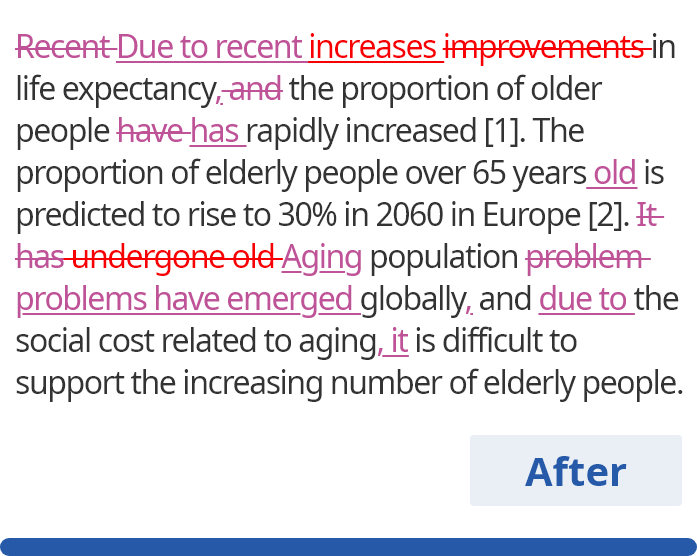Quotation Marks (“” ‘’)
Quotation marks are punctuation marks that are used to indicate direct speech or emphasize a given word or phrase. There are many easy-to-overlook rules related to quotation mark usage. Common confusions involve capitalization, the use of quotes within quotes, and other punctuation marks.
When to Use Quotation Marks
The primary use of quotation marks is to indicate direct speech or quotations. Direct or quoted speech is a word-for-word reporting of what someone said. This someone might be a real person or historical figure.
- Example
- Einstein once said, “Imagination is more important than knowledge.”
- Example
- Socrates put it best: “The unexamined life is not worth living.”
However, quotation marks are also used to mark the speech or thoughts of a fictional character.
- Example
- “I don’t feel very much like Pooh today,” said Pooh.
- Example
- “I wonder what Piglet is doing,” thought Pooh.
Run-in quotations and block quotations
There are two ways to quote existing material: (1) using run-in quotations and (2) using block quotations. Run-in quotations tend to be shorter and are distinguishable from the surrounding text by quotation marks.
- Example
- Our boss said, “The interns will proof every brief twice.”
- Example
- The paper will be on Kant’s Categorical Imperative: “Act in such a way that you treat humanity, whether in your own person in the person of any other, never merely as a means to an end, but always at the same time as an end.”
Block quotations, on the other hand, tend to be longer. Furthermore, they are not separated from the surrounding text by quotation marks but rather by distinct formatting.
The exact formatting of a block quotation may differ between style guides, but there are several rules that are constant.
A block quotation should:
- 1.
- Begin on its own new line.
- 2.
- Be indented so that it does not look like a normal paragraph.
- 3.
- Not be surrounded by quotation marks.
- Example
-
Kafka’s Metamorphosis is frequently cited as an example of absurdism. It is famous for its opening paragraph:
As Gregor Samsa awoke one morning from uneasy dreams he found himself transformed in his bed into a gigantic insect. He was lying on his hard, as it were armor-plated, black and when he lifted his head a little he could see his domelike brown belly divided into stiff arched segments on top of which the bed quilt could hardly keep in position and was about to slide off completely. His numerous legs, which were pitifully thin compared to the rest of his bulk, waved helplessly before his eyes.
Quotation Mark Rules
There are several rules for quotation mark usage. Some are obvious; for example, quotation marks should always be used in pairs, and each member of the pair should face the other quotation marks.
- Incorrect
- Einstein once said, “Imagination is more important than knowledge.
- Incorrect
- Einstein once said, “Imagination is more important than knowledge.“
- Correct
- Einstein once said, “Imagination is more important than knowledge.”
However, there are less obvious rules that dictate how quotation marks should be used with other punctuation marks, how a quoted section should be capitalized, and how quotes that are within existing quotes should be denoted.
Quotations with other punctuation marks
A common confusion is how quotation marks should be used with other punctuation marks. For example, if a sentence ends with a period, should the ending quotation mark be placed inside the period or outside it?
The rules for how quotation marks should be used with other punctuation marks differs for American English and British English. However, for both types of English, punctuation marks that precede and are not part of the original quote always come before the quotation marks.
- Incorrect
- According to Socrates “, An unexamined life is not worth living.”
- Correct
- According to Socrates, “An unexamined life is not worth living.”
Punctuation marks that end a sentence have different rules based on the type of punctuation.
1. Periods and commas always go inside quotation marks.
- Incorrect
- “I don’t feel very much like Pooh today”, said Pooh.
- Correct
- “I don’t feel very much like Pooh today,” said Pooh.
- Incorrect
- Einstein once said, “Imagination is more important than knowledge”.
- Correct
- Einstein once said, “Imagination is more important than knowledge.”
2. Colons and semicolons always go outside quotation marks.
- Incorrect
- The boss told the interns to “proof the Spector briefs:” a stack of documents tall enough to bury a small child.
- Correct
- The boss told the interns to “proof the Spector briefs”: a stack of documents tall enough to bury a small child.
- Incorrect
- Our boss said, “The interns will proof every brief twice;” she wanted to be sure that the briefs were free of any inconsistencies.
- Correct
- Our boss said, “The interns will proof every brief twice”; she wanted to be sure that the briefs were free of any inconsistencies.
3. Question marks and exclamation points go inside the quotation marks if they are part of the quotation. Otherwise, they are placed outside the quotation marks.
- Incorrect
- She shouted, “I’m so excited”!
- Correct
- She shouted, “I’m so excited!”
- Incorrect
- Why do you roll your eyes every time I say, “Please do the dishes?”
- Correct
- Why do you roll your eyes every time I say, “Please do the dishes”?
Quotations and capitalization
Another common quotation error has to do with capitalization.
1. If the quotation is a full sentence, the first letter must always be capitalized.
- Incorrect
- According to Socrates, “an unexamined life is not worth living.”
- Correct
- According to Socrates, “An unexamined life is not worth living.”
2. However, if the quotation is not a complete sentence, the first letter should not be capitalized.
- Incorrect
- The boss told the interns to “Proof the Spector briefs.”
- Correct
- The boss told the interns to “proof the Spector briefs.”
Quotes within quotes
Quotations within quotations are marked by single quotation marks. This is because using double quotes for both the external and internal quotations is confusing.
- Incorrect
- “It is important to self-reflect,” said Lana. “In the words of Socrates, “An unexamined life is not worth living.””
- Correct
- “It is important to self-reflect,” said Lana. “In the words of Socrates, ‘An unexamined life is not worth living.’”
Quotes for Titles and Scare Quotes
Another use for quotation marks is to indicate emphasis. Quotation marks can be used to emphasize the title of a shorter work, such as an article or book chapter.
- Example
- The first chapter of Harry Potter is “The Boy Who Lived.”
They can also be used to indicate that a word is being used as a word, rather than its meaning.
- Example
- According to Merriam-Webster, a “book” is a set of written sheets of skin or paper or tablets of wood or ivory.
Another common use for quotation marks is to elicit attention or doubt. Quotation marks used in such a way are called “scare quotes,” and they serve to make the reader question the legitimacy of the word, term, or phrase it surrounds. Compare the following two sentences.
- Without Scare Quotes
- The class is optional.
- With Scare Quotes
- The class is “optional.”
The first sentence suggests that you could choose not to take the class with no issues. The second sentence, however, suggests that while you technically could choose not to take the class, not taking it will have some negative consequence. In other words, the class may be optional on paper but is more-or-less essential in reality.
Single Quotation Marks
Single quotations marks have a few more uses other than indicating quotes within quotes. In academic writing, technical terms that are highly specific to a particular discipline are frequently marked with single quotes. While this practice is not considered a rule, it is considered standard in certain disciplines, such as philosophy and theology, which have technical terms that are common in everyday language.
- Example
- Much of moral philosophy has been concerned with defining the meaning of ‘goodness’.
Single quotes are also often used to mark quotations in news headlines.
- Example
- Drug companies ‘put profits over lives’.
Finally, single quotes can substitute parentheses for in-text translations.
- Example
- He said Entschuldigung, or ‘excuse me’, when he bumped into her.
Quotations in American vs. British English
The rules detailed in this article are specific to American English. Most of these rules apply to British English as well, but there are three key differences.
1. British English favors single quotes, even for direct speech or quotations.
- Example
- Einstein once said, ‘Imagination is more important than knowledge’.
2. For quotes within quotes, British English uses single quotes to mark the external quotation and double quotes to mark the internal quotation. This is the opposite of US quotations in US English.
- Example
- ‘It is important to self-reflect’, said Lana. ‘In the words of Socrates, “An unexamined life is not worth living.”’
3. In British English, punctuation marks, unless part of the original quotation, are always placed outside the quotation marks.
- Example
- The boss told the interns to ‘proof the Spector briefs’.












